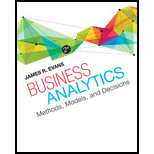
Concept explainers
Lauren drinks a vanety of soft dnnks. Over the past month, she has had 15 diet colas, 4 cans of lemonade, and 6 cans of root beer in no particular order or pattern.
- Given this history, what is the
probability that her next dnnk will be a diet cola? Lemonade? Root beer? - What definition of probability did you use to answer this question?
(a)
To find: The probability of next drink will be
Answer to Problem 1PE
Explanation of Solution
Given information:
The below table represents the number of soft drinks that Lauren has drink over the past month.
Calculation:
In this question, there are no patterns or orders to drink. Therefore the following formula can be used to calculate the probabilities:
The total number of soft drinks is
(b)
To state: The definition that used to find the probability in part (a).
Answer to Problem 1PE
The probability of an event is equal to the relative frequency of the outcomes of that event.
Explanation of Solution
Thereare no patterns or orders to drinkin this question. The following formula is used to calculate the probabilities:
Therefore the definition that used to find the probability is:
The probability of an event is equal to the relative frequency of the outcomes of that event.
It is called as Relative Frequency Definition of Probability.
Want to see more full solutions like this?
Chapter 5 Solutions
Business Analytics (2nd Edition)
 Holt Mcdougal Larson Pre-algebra: Student Edition...AlgebraISBN:9780547587776Author:HOLT MCDOUGALPublisher:HOLT MCDOUGAL
Holt Mcdougal Larson Pre-algebra: Student Edition...AlgebraISBN:9780547587776Author:HOLT MCDOUGALPublisher:HOLT MCDOUGAL

